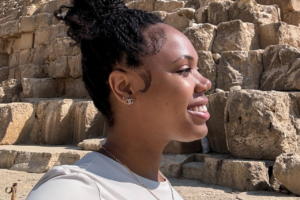In the ever-evolving landscape of digital media, success in travel content creation begins with a fundamental understanding of the four primary content formats. Like choosing the right lens for photography or selecting the perfect wine for a meal, picking the optimal format for your travel stories can make the difference between content that merely exists and content that truly resonates.
Written content, the most traditional format, continues to prove its endurance in the digital age. Consider the case of Sarah, a former corporate consultant who transformed her detailed travel journals into a thriving blog. “I always thought my obsessive note-taking was just a habit,” she reflects, “but it became the foundation of my travel writing career.” Today’s written content extends far beyond traditional blogging—newsletters have emerged as powerful community-building tools, offering an intimate connection with readers while providing surprising monetization opportunities. Some travel newsletters command premium subscriptions of $50-100 per month, proving that carefully curated written content still holds significant value in our visual-first world.
Audio content, while not explicitly detailed in traditional travel content discussions, deserves consideration in today’s podcast-driven culture. Travel podcasts and audio guides offer unique opportunities to capture the ambient sounds of distant markets or narrate the experience of watching a sunrise over ancient ruins. This format allows creators to connect with audiences during their daily commutes or workout sessions—times when visual content might be impractical.
Photography, the third pillar of travel content, has undergone a remarkable transformation. Gone are the days when travel photography meant purely documentary images of landmarks and landscapes. Today’s successful travel photographers understand that their images must tell stories, evoke emotions, and often serve multiple purposes. From stock photography to UGC (User Generated Content) creation, the opportunities extend far beyond Instagram posts. Many creators find success by building specialized photography niches—focusing on luxury hotel interiors, local culinary scenes, or adventure sports destinations.
Video content, perhaps the most dynamic of the formats, offers unparalleled opportunities for storytelling and monetization. The rise of platforms like YouTube has democratized video content creation, while maintaining high barriers for quality and consistency. Successful video creators often combine multiple elements—stunning visuals, compelling narratives, and practical information—to create content that serves both entertainment and utility. Live streaming has emerged as a particularly interesting subset of video content, offering real-time engagement with audiences and often requiring less post-production work than traditional video content.

The key to success lies not in choosing just one format, but in understanding how these formats can complement each other. A single travel experience can spawn a thoughtful blog post, a stunning photo series, an atmospheric video, and several social media stories. This multi-format approach not only maximizes content potential but also caters to different audience preferences and consumption habits.
When selecting your primary format, consider three crucial factors: your natural talents, your available resources, and your target audience’s preferences. Someone with a background in photography might naturally gravitate toward visual content, while a former journalist might excel in written formats. However, don’t let current skills limit your possibilities—many successful creators report that they developed their technical abilities alongside their content journey, learning and adapting as they grew.
The beauty of modern travel content creation lies in its flexibility and potential for evolution. While you might start with written blog posts, your journey could eventually lead to hosting live streams from exotic locations or creating detailed travel guides. The key is to begin with a format that feels authentic to your voice while remaining open to exploration and growth.
In the realm of travel content creation, visual storytelling has emerged as perhaps the most powerful medium for capturing the essence of destinations and experiences. While anyone can snap a photo with their smartphone, the art of creating compelling visual content that resonates with audiences—and more importantly, attracts compensation—requires a nuanced understanding of both technical craft and market dynamics.
Consider the story of Marcus, a former architecture photographer who pivoted to travel content creation in 2023. “I thought my technical skills would immediately translate to travel photography,” he recalls, “but I quickly learned that capturing buildings and capturing experiences require entirely different approaches.” His journey illustrates a crucial truth about visual content creation: technical proficiency must be balanced with authentic storytelling and market awareness.
The landscape of visual content creation has evolved into three distinct but interconnected pathways: professional travel photography, User Generated Content (UGC) creation, and influencer photography. Each requires its own strategy and skill set, while offering unique monetization opportunities.
Professional travel photography remains the most traditional path, but its modern incarnation extends far beyond selling prints or stock photos. Today’s successful travel photographers often maintain diverse portfolios serving multiple clients: tourism boards seeking destination marketing materials, luxury hotels requiring editorial-style property shoots, and travel magazines hunting for authentic cultural documentation. The key to success in this space lies in developing a distinctive visual style while maintaining the versatility to meet varied client needs.
UGC creation has emerged as perhaps the most accessible entry point into paid visual content. Unlike traditional influencer work, UGC creators don’t need large followings—instead, they leverage their ability to create authentic, relatable content that brands can use across their own channels. A skilled UGC creator might spend a morning capturing content for a boutique hotel’s social media, afternoon shooting for a local tour company, and evening documenting a restaurant’s signature dishes. The beauty of this model lies in its scalability; many successful UGC creators report earning between $500-2,000 per brand collaboration, with the potential to serve multiple clients in a single location.
The influencer pathway, while often romanticized, requires perhaps the most strategic approach. Success in this space demands not just stunning visuals, but a keen understanding of audience building and engagement. The most successful travel influencers have moved beyond merely posting beautiful destination photos—they’re creating comprehensive visual guides, sharing detailed photography tutorials, and building communities around specific niches within the travel space.
Across all three pathways, several principles remain constant. First, consistency in visual style has become non-negotiable. Whether shooting luxury resorts or local street scenes, maintaining a cohesive aesthetic helps build brand recognition and attract consistent work. Second, the ability to tell stories through images—not just capture beautiful scenes—separates successful creators from the crowd. Finally, understanding the business side of visual content creation, from pricing strategies to licensing agreements, proves just as crucial as creative capabilities.
For those beginning their journey in visual content creation, the key lies in starting with one pathway while remaining open to opportunities in others. Many successful creators report that their initial focus on one area naturally led to opportunities in others, allowing them to build diverse income streams while maintaining creative authenticity.
In an era dominated by short-form video and fleeting social media posts, written content remains a remarkably resilient and lucrative medium in the travel space. The written word offers something uniquely valuable: depth, permanence, and the ability to transform fleeting experiences into lasting resources for fellow travelers. Yet the path to monetizing written content requires a sophisticated understanding of multiple revenue streams and content formats.
Consider the evolution of travel blogging, which has matured far beyond its diary-entry origins. Modern travel blogs function more like digital magazines, combining personal narratives with practical utility. Take the case of Elena, who transformed her detailed restaurant reviews into a comprehensive food tourism platform. “I started by simply documenting every meal during my travels,” she explains, “but realized that by adding pricing details, booking information, and cultural context, I was creating something far more valuable than just reviews.”
The rise of newsletters has perhaps been the most intriguing development in written travel content. Unlike blogs, which cast a wide net, newsletters create intimate, direct relationships with readers. Successful travel newsletters often focus on specific niches—luxury hotel deals, hidden urban gems, or sustainable travel tips. The key to newsletter monetization lies in understanding your audience’s specific needs. Some creators find success with premium subscription models, offering exclusive content or early access to travel deals, while others leverage their engaged audience to secure sponsored content opportunities.

Travel journalism, while more traditional, continues to evolve and offer opportunities for skilled writers. Modern travel journalists must navigate a landscape that demands both traditional reporting skills and digital savvy. Many successful travel journalists maintain portfolios that include both traditional magazine features and digital content, understanding that each platform requires its own approach to storytelling.
Digital products have emerged as perhaps the most scalable way to monetize travel expertise through writing. The market for detailed city guides, themed itineraries, and specialized travel resources continues to grow. Success in this space often comes from identifying specific pain points in the travel experience. For instance, one creator found success by developing comprehensive packing guides for different types of trips and climates, while another specializes in creating detailed itineraries for solo female travelers in specific regions.
The key to monetizing written content lies in understanding the symbiotic relationship between different formats. A well-crafted blog post might lead readers to sign up for a newsletter, which then promotes a digital product, creating a seamless ecosystem of content and commerce. Pinterest has emerged as a particularly powerful tool in this ecosystem, serving as a visual gateway to written content. Successful creators report that thoughtfully designed Pinterest graphics can drive significant traffic to their written content months or even years after publication.
Most importantly, successful written content creators understand that monetization should never compromise quality. The most profitable travel writers are those who maintain editorial standards while adapting to market demands. They recognize that in an age of AI-generated content, authentic experiences and genuine insights become increasingly valuable.
For those beginning their journey in travel writing, the path to profitability often starts with mastering one format while strategically expanding into others. Whether starting with a blog, newsletter, or digital products, the focus should remain on creating genuine value for readers while building a distinctive voice in the crowded travel content landscape.
The allure of traveling for a living extends far beyond the realm of content creation. While social media might spotlight influencers and vloggers, a rich tapestry of professional opportunities exists for those who prefer to experience the world without the pressure of documenting every moment. These roles, often overlooked in the digital age, offer unique combinations of stability and adventure.
The role of flight attendant remains perhaps the most iconic entry point into professional travel. Despite its seemingly glamorous surface, the position demands a unique blend of skills that extend far beyond serving drinks at 35,000 feet. Take the case of James, who transitioned from corporate sales to becoming a flight attendant at 28. “Everyone told me I was crazy to start over,” he reflects, “but they didn’t understand that this career offers something beyond traditional progression—it offers perspective.” While starting salaries might seem modest, veteran flight attendants report that the real value lies in the lifestyle benefits: flexible schedules, travel benefits that extend to family members, and the ability to explore destinations during layovers that most tourists never see.
Travel nursing has emerged as one of the most lucrative paths in professional travel, particularly in recent years. The position offers an extraordinary combination of professional development and geographical freedom. Experienced travel nurses can command salaries that often eclipse their permanent counterparts, sometimes by factors of two or three. However, this path demands more than just medical expertise—it requires adaptability, cultural sensitivity, and the ability to quickly integrate into new healthcare teams and communities.

Cruise ship employment presents a fascinating microcosm of travel opportunities, offering positions that range from entertainment and hospitality to technical and medical roles. Life aboard these floating cities provides a unique perspective on both travel and career development. Many crew members report that the experience of working on cruise ships develops soft skills that prove invaluable in future careers—adaptation to diverse teams, crisis management, and cultural intelligence become second nature.
Perhaps the most intriguing development in non-content travel careers is the rise of professional house-sitting. This role has evolved from casual favor to legitimate profession, with top house-sitters managing portfolios of luxury properties across multiple continents. Successful house-sitters often combine this work with remote jobs or freelance careers, creating lifestyle arrangements that would have seemed impossible a decade ago.
The common thread among these diverse paths is the importance of viewing them as legitimate career choices rather than temporary adventures. Success in any of these fields requires professional development, strategic thinking, and often, specialized certifications or training. For instance, many cruise ship workers invest in multiple certifications to increase their versatility and value to employers.
For those considering these paths, the key lies in understanding that while they offer travel opportunities, they are first and foremost professional roles. The most successful practitioners approach them with the same dedication and strategic thinking they would apply to any career. They understand that the privilege of professional travel comes with real responsibilities and challenges—yet for many, the rewards far outweigh the sacrifices.
As the nature of work continues to evolve, these traditional travel careers are being reimagined for the modern era. Remote work policies, flexible scheduling, and increasing demand for skilled professionals in the travel sector have created hybrid opportunities that combine elements of different roles. The future of professional travel might well lie in the ability to craft personalized combinations of these established paths.
In the evolving landscape of travel content creation, video has emerged as perhaps the most powerful medium for capturing the essence of wanderlust. While anyone can point a camera at a sunset, the art of creating compelling video content that both resonates with audiences and generates revenue requires a sophisticated understanding of storytelling, technical craft, and platform dynamics.
The journey into video content creation often begins with YouTube, the platform that has democratized travel storytelling while maintaining high standards for quality and consistency. Consider the experience of Maya, who transformed her weekend travel vlogs into a thriving YouTube channel. “I started with just my phone and basic editing software,” she recalls, “but quickly learned that success on YouTube isn’t just about capturing beautiful moments—it’s about crafting narratives that viewers can’t help but follow.”
Modern travel video content exists in two distinct but complementary formats: produced content and live streaming. While traditional YouTube videos allow for careful editing and storytelling refinement, live streaming offers an immediacy and authenticity that many audiences crave. The key lies in understanding how to leverage both formats effectively.
Successful YouTube travel content typically follows one of several proven frameworks: destination guides, experience reviews, or behind-the-scenes glimpses into the travel lifestyle. The most successful creators often combine these elements, understanding that viewers seek both practical information and vicarious adventure. Technical quality matters immensely—steady footage, clear audio, and thoughtful editing have become non-negotiable standards. However, equipment requirements need not be overwhelming; many successful creators report starting with mid-range cameras and basic stabilization equipment, investing in higher-end gear only as their channels grow.
Live streaming has emerged as a particularly interesting opportunity for travel content creators. The barrier to entry is remarkably low—requiring only a stable internet connection and a smartphone—yet the potential for engagement and monetization is significant. Successful travel streamers report that their audiences particularly value the ability to interact in real-time, asking questions about destinations and influencing the direction of the content.
Content planning and consistency remain perhaps the most challenging aspects of video creation. Successful creators typically maintain content calendars that balance timely seasonal content with evergreen travel guides. They understand that while spontaneity can create magical moments, sustainable success requires strategic planning. Many adopt a hybrid approach, maintaining a backbone of carefully planned content while remaining flexible enough to capture unexpected opportunities.
The monetization landscape for video content has evolved far beyond simple advertising revenue. While YouTube’s Partner Program provides a foundation, successful creators typically develop multiple revenue streams. These might include brand partnerships, affiliate marketing through video descriptions, or premium content offerings. Some creators report that their most profitable content isn’t their most viewed—instead, it’s content that serves specific audience needs or attracts particular sponsors.
Production quality requirements continue to evolve, driven by both technological advances and audience expectations. However, creators should remember that technical perfection matters less than authentic storytelling and consistent value delivery. As one successful creator notes, “My most popular videos aren’t always my most polished—they’re the ones where I shared genuine experiences and useful insights.”
For those beginning their journey in travel video content, the key lies in finding the balance between quality and quantity. Start with achievable goals—perhaps one well-crafted video per week—and focus on developing a consistent style and voice. Remember that every successful travel channel began with a single upload, and every creator had to find their unique way of sharing the world through their lens.
In the sophisticated ecosystem of travel content creation, the path to profitability extends far beyond mere documentation of experiences. Today’s successful travel creators understand that monetization requires a delicate balance between authentic storytelling and strategic business development. The landscape of opportunities has evolved dramatically, offering diverse avenues for revenue generation while maintaining editorial integrity.

Brand sponsorships, perhaps the most visible form of monetization, have matured beyond simple product placement. Consider the case of Isabella, who transformed her modest travel blog into a six-figure business through strategic brand partnerships. “My breakthrough came when I stopped thinking about sponsorships as one-off deals,” she reflects, “and started approaching them as long-term relationships that could add value to my audience’s travel experiences.” Successful creators report that the most lucrative partnerships often emerge from authentic brand alignment rather than mere reach metrics.
Tourism board collaborations represent a particularly intriguing opportunity in the current landscape. These partnerships have evolved from simple destination marketing to sophisticated content campaigns that serve both promotional and cultural exchange purposes. Modern tourism boards seek creators who can craft narratives that resonate beyond traditional travel demographics, often focusing on specific aspects of a destination’s identity—its culinary scene, cultural heritage, or sustainable tourism initiatives.
Affiliate marketing, while often misunderstood, has emerged as one of the most sustainable revenue streams for travel creators. The key lies in understanding its role as a service to your audience rather than merely a sales channel. Successful affiliate marketers in the travel space curate partnerships that genuinely enhance their audience’s travel experiences—from boutique hotel bookings to specialized travel gear. Some creators report that thoughtfully integrated affiliate content can generate significant passive income months or even years after publication.
The art of hosting group trips has emerged as a particularly interesting monetization strategy, combining digital influence with real-world experience curation. Successful group trip hosts understand that they’re not merely planning itineraries—they’re crafting shared experiences that transform online communities into real-world connections. These trips often become content generators themselves, creating a virtuous cycle of engagement and opportunity.
What many aspiring creators fail to realize is the importance of developing multiple, complementary revenue streams. The most successful travel content creators typically maintain a portfolio of income sources, understanding that different monetization strategies may dominate at different stages of their journey. Early-career creators might focus on affiliate marketing and smaller brand collaborations, while established voices often shift toward premium partnerships and proprietary products.
The key to successful monetization lies in understanding the delicate balance between commercial opportunity and authentic storytelling. As one veteran creator notes, “The moment your audience senses that profit has overtaken passion, you’ve lost the trust that makes monetization possible in the first place.” This wisdom suggests that the most sustainable approach to travel content monetization is one that prioritizes value creation for your audience while remaining open to strategic opportunities.
For those beginning their monetization journey, the path often starts with mastering one revenue stream while strategically developing others. Success requires not just content creation skills, but also business acumen—understanding contract negotiation, pricing strategies, and the importance of professional relationships in the travel industry. Yet perhaps most importantly, it requires maintaining the authentic voice and genuine enthusiasm for travel that attracted your audience in the first place.
The journey from passionate traveler to professional content creator represents more than just a career transition—it embodies the modern intersection of wanderlust and entrepreneurship. As we’ve explored the various pathways to monetizing travel experiences, one truth becomes increasingly clear: success in this space requires a sophisticated blend of creative authenticity and business acumen.
The landscape of travel content creation has evolved far beyond simple documentation. Today’s successful creators understand that they’re not merely sharing experiences—they’re crafting valuable resources, building engaged communities, and creating sustainable business models. Whether through written content that stands the test of time, visual storytelling that captures imaginations, or video content that brings destinations to life, each medium offers unique opportunities for both creative expression and revenue generation.

What becomes evident through this exploration is that the most successful travel creators rarely limit themselves to a single format or revenue stream. They understand that diversification—both in content creation and monetization strategies—provides resilience in an ever-changing digital landscape. A thoughtfully maintained blog might lead readers to a newsletter, which promotes group trips, while social media content attracts brand partnerships and tourism board collaborations. Each element supports and strengthens the others, creating a robust ecosystem of content and commerce.
For those beginning their journey, the key lies not in trying to replicate others’ success but in identifying the unique value you can bring to the travel content space. Whether through specialized knowledge of particular destinations, unique storytelling abilities, or a distinctive perspective on travel experiences, success often comes from leaning into your authentic strengths while remaining open to evolution and growth.
The future of travel content creation looks increasingly sophisticated, with creators taking on roles that blend journalism, entertainment, education, and curation. As the industry continues to mature, opportunities will likely expand for those who can maintain high standards of quality while adapting to new platforms and audience needs.
Perhaps most importantly, successful travel content creation requires maintaining the delicate balance between commercial success and authentic storytelling. The moment content feels manufactured solely for profit is the moment it loses its power to inspire and inform. The most enduring success comes to those who never lose sight of what drew them to travel content creation in the first place—the genuine desire to share experiences, inspire exploration, and help others discover the world’s endless possibilities.
As you embark on or continue your journey in travel content creation, remember that every successful creator started with a single piece of content, a single collaboration, or a single sponsored post. The path to profitability may be winding, but with dedication, strategic thinking, and authentic creativity, the opportunity to transform travel passion into profession remains more accessible than ever.
In an era where the democratization of travel content meets unprecedented opportunities for monetization, the pathway to becoming a professional travel creator has never been more accessible—yet paradoxically, never more complex. The landscape has evolved far beyond simple documentation of experiences, demanding a sophisticated understanding of multiple platforms, revenue streams, and audience engagement strategies.
Consider the journey of Alexandra, a former corporate consultant who now commands six-figure earnings from her travel content enterprise. “The most valuable lesson I learned,” she reflects, “was that successful travel content creation isn’t about documenting every moment—it’s about crafting experiences that resonate with specific audiences while building sustainable revenue streams.” Her insight cuts to the heart of modern travel content creation: the intersection of authentic storytelling and strategic business development.
The contemporary travel content creator must navigate a complex ecosystem where traditional boundaries between formats and platforms continue to blur. Written content feeds visual storytelling; video content drives newsletter subscriptions; live streams build communities that populate group trips. Success in this space requires not just creativity and technical skill, but a nuanced understanding of how different content formats and revenue streams can complement and reinforce each other.
What many aspiring creators fail to recognize is that the most successful professionals in this space rarely rely on a single format or revenue stream. They understand that resilience comes from diversification—both in content creation and monetization strategies. A well-crafted blog post might lead readers to a newsletter, which promotes upcoming group trips, while social media content attracts brand partnerships and tourism board collaborations. Each element supports and strengthens the others, creating a robust ecosystem of content and commerce.
For those beginning their journey, the key lies not in trying to replicate others’ success but in identifying the unique value they can bring to the travel content space. Whether through specialized knowledge of particular destinations, unique storytelling abilities, or a distinctive perspective on travel experiences, success often comes from leaning into authentic strengths while remaining open to evolution and growth.
Looking ahead, the future of travel content creation appears increasingly sophisticated, with creators taking on roles that blend journalism, entertainment, education, and curation. As the industry continues to mature, opportunities will likely expand for those who can maintain high standards of quality while adapting to new platforms and audience needs.
The path to becoming a paid travel creator requires maintaining a delicate balance between commercial success and authentic storytelling. The moment content feels manufactured solely for profit is the moment it loses its power to inspire and inform. The most enduring success comes to those who never lose sight of what drew them to travel content creation in the first place—the genuine desire to share experiences, inspire exploration, and help others discover the world’s endless possibilities.
As you embark on or continue your journey in travel content creation, remember that every successful creator started with a single piece of content, a single collaboration, or a single sponsored post. The path to profitability may be winding, but with dedication, strategic thinking, and authentic creativity, the opportunity to transform travel passion into profession remains more accessible than ever.


